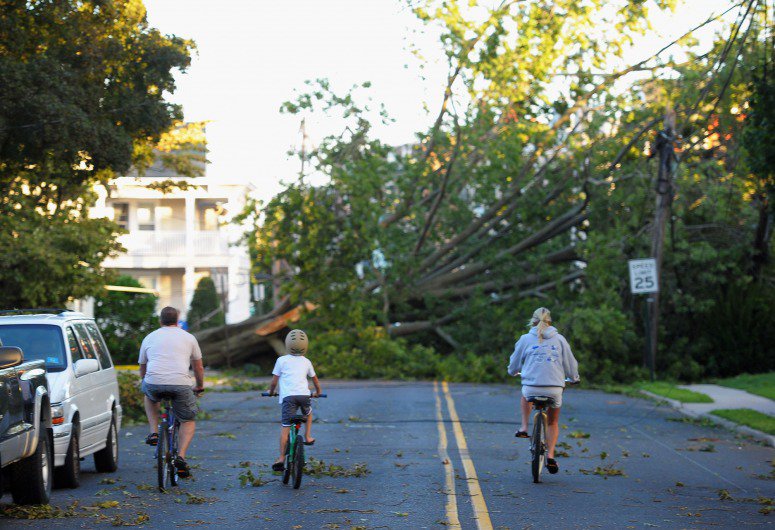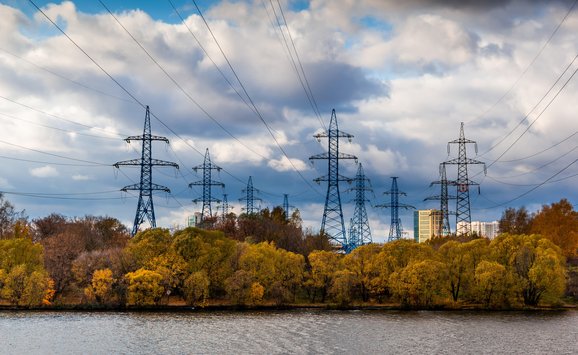The Trump administration’s proposal for DOE aimed at saving unprofitable coal and nuclear plants would increase costs for electricity consumers with negligible benefits for grid resilience.

This spring, the Trump administration proposed an unprecedented federal intervention on behalf of uneconomic coal and nuclear power plants in the name of promoting “national defense and maximiz[ing] domestic energy supplies.” The proposed intervention came to light due to a leaked draft memo written by the Department of Energy (DOE), which was quickly followed by a presidential directive ordering the Secretary of Energy to “prepare immediate steps to stop the loss of these resources.”
The presidential directive is light on details, but the policy proposed in the leaked memo would aid those plants through two rules. First, it would require grid operators to purchase electricity from a government-determined list of “fuel-secure” generators. In practice, this list is likely to comprise coal and nuclear plants almost exclusively. Second, it would establish a Strategic Electric Generation Reserve—a collection of generators set aside to supply power when electricity markets or other sources fail to deliver sufficient power to meet electricity demand.
A solution in search of a problem: this action would create large costs for US energy consumers with negligible benefits for grid resilience. Tweet
Much ink has been spilled since the directive was released over the alleged need and justification for the proposed order as well as the potential impacts on human health, generally focusing on its first component—the mandate for grid operators to purchase electricity from coal and nuclear plants. This action appears to be a solution in search of a problem—it would simply create large costs for US energy consumers with negligible benefits for grid resilience.
The supposed problem to be solved is the potential unreliability of the electricity system. However, as has been widely discussed, the primary causes of electricity outages are transmission and distribution problems, such as trees coming into contact with power lines. Historically, only 0.00007 percent of major disruptions have been due to fuel insecurity and only 0.009 percent have been due to generation inadequacy, meaning a solution focused on “fuel-secure” generation is ill-suited to address the purported problems highlighted by the memo.

MANASQUAN, NJ—AUGUST 28, 2011: A family rides toward a tree brought down by winds caused by Hurricane Irene. The storm knocked out power to more than 4.5 million people
That said, what are the economic issues around the implementation of the proposed order? The first component—the electricity purchase mandates—have received much attention already (see, e.g., Forbes, CNBC, Utility Dive, and the Examiner). Here we focus on the second component: the Strategic Electric Generation Reserve.
How would a Strategic Electric Generation Reserve Work?
The DOE memo contains very limited information about the proposed Strategic Electric Generation Reserve (SEGR), leaving many questions about how it would function in practice. Questions about key design features include the following:
- Reserve size: How big would the reserve be?
- Rules for eligibility and procurement: What kinds of capacity are eligible? How would resources be procured?
- Rules for the reserve’s use: What is the rule for tapping the reserve?
- Rules for participation in other markets: Can reserve units participate in the energy market? Put differently, do they routinely generate electricity, or only in exceptional circumstances?
The United States has long held crude oil reserves in the Strategic Petroleum Reserve (SPR), and this analogous policy example can shed some light on these features. (RFF researchers, including one of the authors of this post, have written recently offering guidance on the use of the SPR and on factors affecting its optimal size.) The SPR is a stockpile of physical barrels of crude oil. By contrast, a strategic electricity reserve would not physically stockpile electricity because electricity cannot be cost-effectively stored at scale. Instead, a SEGR would involve assembling a group of power plants to be available to generate incremental power on demand. However, the SPR is not the only reserve with which to draw a comparison.
A Look at the German Strategic Reserve
Germany is beginning to experiment with a strategic reserve as part of its ongoing energy transition (“Energiewende”), which includes a complete phase-out of nuclear power. Germany’s energy transition is much further along than the changes in generation mix experienced to date in the United States. To the extent that Germany’s transformation reduces the reliability of its grid (and it is not clear that it does), there is perhaps a stronger case for an electricity reserve there. From 2008 to 2018, Germany has retired more than half of its nuclear capacity (from 21 to 10 gigawatts [GW]) while more than tripling its non-hydro renewable capacity (from 29 to 101 GW)—leading to fully 50 percent of its capacity comprising non-hydro renewables, compared to only 27 percent coal and nuclear and 14 percent gas. Generation inadequacy has not led to heightened supply disruptions thus far, but the expected continuation of these trends has raised concerns about tighter reserve margins in the future, suggesting a potential role for a strategic electricity reserve.
The argument is far weaker for the United States. Indeed, the US experience looks tame by comparison: we have plenty of spare generating capacity, only about 13 percent of capacity is non-hydro renewable, and—even with recent coal and nuclear retirements—33 percent of capacity is coal and nuclear and 44 percent is gas (see EIA’s Electric Power Annual with data for 2016, Tables 4.2a and 4.5).
If the United States is going to pursue a reserve similar to Germany’s, it would behoove us to learn from their policy. Fortunately, the Germans have been developing this concept for several years (see Keles et al. 2016 for an academic discussion of strategic reserves) and have identified a number of economically minded design principles that aim to achieve a relatively efficient system. These principles address the four points mentioned above:
- Reserve size: Initially, the reserve will be capped at 2 GW, which is about 2 percent of annual peak load in Germany. After 2020, the reserve is allowed to increase to as much as 5 percent of peak load, or about 5 GW.
- Rules for eligibility and procurement: Reserve capacity will be procured through competitive, technology-neutral auctions. A wide variety of resource types—not only power plants but also demand response providers (who are end users who are paid to have their energy use reduced during periods of peak demand)—are welcome to offer their services to the strategic reserve.
- Rules for the reserve’s use: The reserve will “be used only after all market-based solutions are fully exhausted.” These plants are kept as a last resort.
- Rules for participation in other markets: Plants that participate in the reserve will not be eligible to participate in, or return to, the energy market. In other words, strategic reserves are for emergencies and are not meant to simply be a stop-gap that props up plants long enough so they can return to the market.
How do these design features stack up to what we can glean of DOE’s proposed SEGR? Regarding the reserve size, Germany’s 2 percent reserve is not a large one. By comparison, the US electricity grid operators already retain reserve margins (i.e., generating capacity in excess of anticipated peak demand) typically between 15 percent and 20 percent. Because the case for such a reserve is stronger for Germany than for the United States, this suggests that a US reserve—if it should exist at all—should be smaller than Germany’s 2 percent of peak load. DOE’s memo gives no indication for the proposed size of the SEGR.
Regarding the eligibility and procurement rules, economists favor competitive, technology-neutral auctions, as the German plan entails. Competitive auctions ensure that consumers are not overpaying, and technology-neutrality promotes economic efficiency by ensuring that no low-cost capacity options are left by the wayside. In addition, technology neutrality is consistent with longstanding principles of both the Federal Energy Regulatory Commission and the North American Electric Reliability Corporation for the procurement of resources to ensure reliable electric service.








